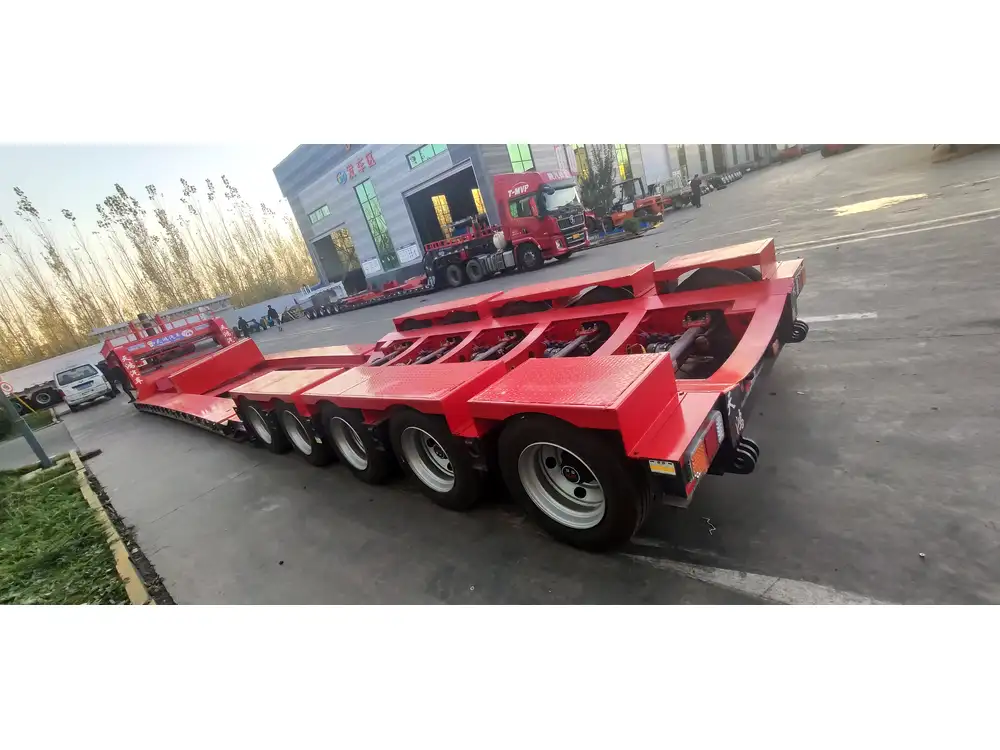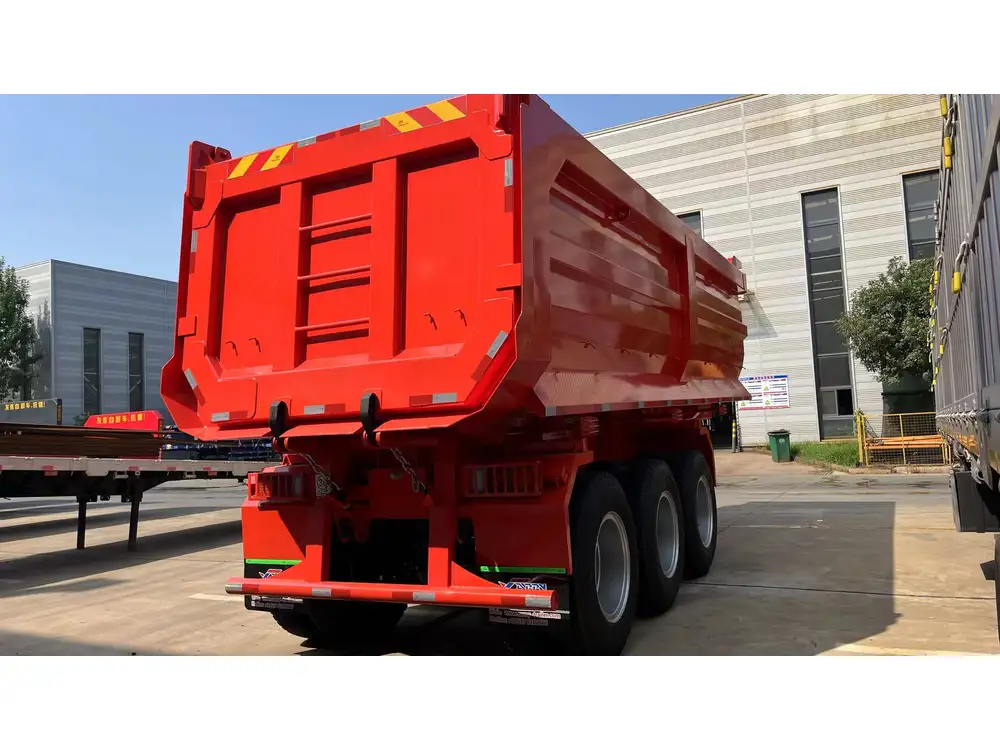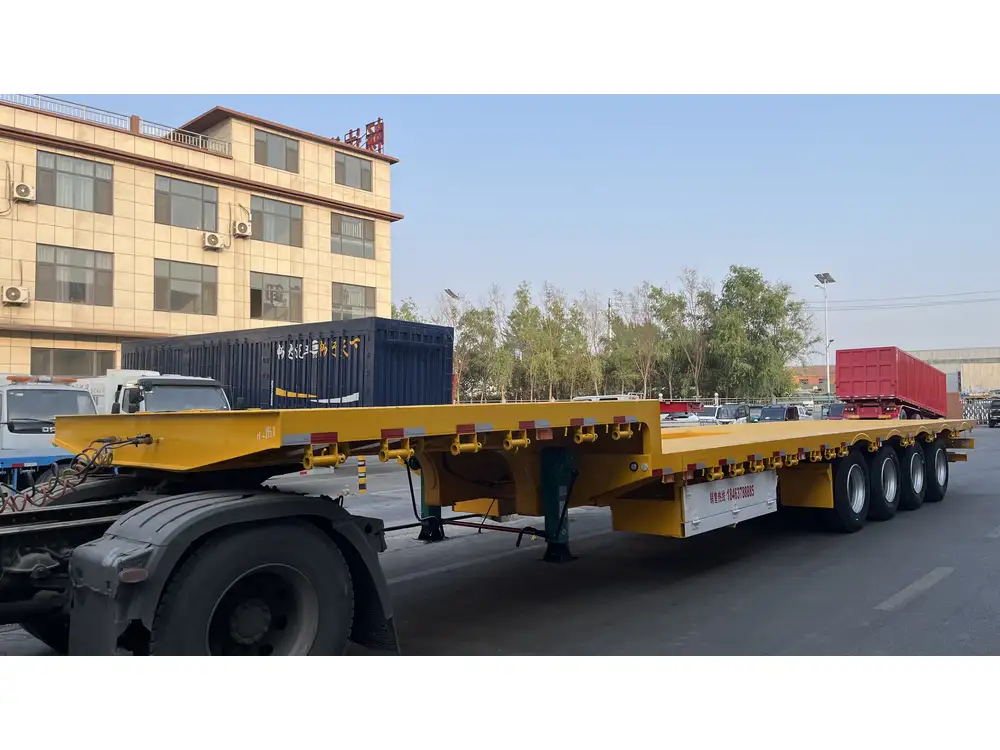Semi-trailers are a vital component of the logistics and freight transportation industries, facilitating the movement of goods across vast distances. As a manufacturer of semi-trailers, understanding their lifespan, maintenance needs, and factors influencing durability is crucial for our customers and our business. In this article, we’ll delve into the average lifespan of semi-trailers, discuss maintenance strategies, and provide tips on enhancing longevity, all while addressing commonly overlooked considerations to optimize usage.
Understanding Semi-Trailer Lifespan
Average Lifespan of Semi-Trailers
The lifespan of a semi-trailer typically ranges between 10 to 15 years, with some factors determining the upper limits of durability. These factors include:
| Factor | Impact on Lifespan |
|---|---|
| Material Quality | High-quality materials increase durability and resistance to wear and tear. |
| Usage Patterns | Frequent, heavy loads contribute to faster depreciation. |
| Maintenance Practices | Regular servicing and repairs extend lifespan significantly. |
| Environmental Conditions | Harsh climates and road conditions can accelerate deterioration. |
| Design and Engineering | Innovative design can enhance lifespan through increased structural integrity. |

Signs Indicating a Need for Replacement
Understanding when to retire a semi-trailer is key to maintaining efficiency in operations. Signs of impending replacement include:
- Structural Damage: Cracks, warping, and rust, especially in critical areas, compromise safety.
- Frequent Repairs: A rising number of repairs can indicate that the cost of upkeep outweighs the benefits of continued use.
- Inefficiency: Rising fuel costs due to aerodynamic inefficiencies may signal that a newer model could provide better value.
- Reduced Load Capacity: As trailers age, they may fail to carry their rated loads safely, necessitating a replacement.
Factors That Affect Semi-Trailer Longevity
1. Maintenance Schedule
Regular maintenance is paramount. Just as with vehicles, implementing a rigorous schedule for inspections and repairs will reduce downtime and extend the useful life of the trailer. Common maintenance tasks include:
- Brake Systems: Regular checks of brake systems prevent failure during transit.
- Suspension Components: Ensuring proper alignment and balance improves load distribution and wear.
- Tires: Frequent inspections for wear and proper inflation can enhance fuel efficiency and handling.

2. Quality Construction Materials
The construction materials of a semi-trailer play a pivotal role in determining its overall lifespan. Not all materials are created equal—here’s a comparative look:
| Material Type | Advantages | Disadvantages |
|---|---|---|
| Aluminum | Lightweight, corrosion-resistant | More expensive, a risk of denting |
| Steel | Durable, lower cost | Heavier, susceptible to rust without treatment |
| Composite | Lightweight, good thermal insulation | Needs specific handling, can be expensive |
Opting for premium materials may increase initial costs but proves economical over time due to reduced maintenance and repair expenses.
3. Road and Load Conditions
The type of roads and the loads carried significantly impact the wear on semi-trailers. On poorly maintained roads, trailers suffer more damage due to potholes and uneven surfaces.
| Condition Type | Impact on Lifespan |
|---|---|
| Smooth Roads | Reduced strain, prolonging lifespan. |
| Rough Terrain | Accelerated wear and potential for structural failure. |
| Heavy Loads | Increases stress on suspension and braking systems. |
Adaptation to maintain appropriate carrying limits based on road types can mitigate damaging effects on the semi-trailer.
4. Environmental Factors
Environmental conditions can greatly influence trailer lifespan. Here are key aspects to consider:
- Climate: Extreme temperatures can affect various materials. For example, steel can rust faster in humid environments.
- Salt and Chemicals: Routes through regions using road salts in winter can corrode semi-trailer components.
- Sun Exposure: Prolonged exposure to UV rays can degrade plastic and rubber components.

Effective Maintenance Strategies
1. Scheduled Inspections
Implementing a planned inspection regimen is indispensable. Detailed checkups should identify potential problems early. Key areas for attention should include:
- Chassis Integrity: Look for cracks and wear points.
- Axle Alignment: Misalignment can lead to uneven tire wear and decreased fuel efficiency.
- Lighting and Electrical Systems: Ensure all lights and signals function correctly for safe operation.
2. Implementing Repairs Promptly
Addressing minor repairs upon notice can save costs and prolong trailer life. For instance, repairing a small crack early prevents costly replacements later.

3. Keeping Records
Maintain comprehensive records of repairs, inspections, and maintenance routines. This data aids in predicting future maintenance needs and can also provide resale value augmentation for the trailer when well-documented.
Innovations Impacting Longevity
Technological advancements in trailer design and maintenance can result in better lifespan outcomes. Here are a few noteworthy innovations:
- Telematics: Advanced tracking systems provide real-time data about trailer health, load status, and predictive maintenance needs.
- Smart Materials: Usage of smart materials that change properties based on condition can enhance safety and performance.
- Aerodynamic Designs: Newer models often feature designs that improve aerodynamics, thus reducing fuel costs and overall wear during operation.
Maximizing Semi-Trailer Longevity
To ensure a semi-trailer lasts as long as possible, users must adopt holistic strategies that cover operation, maintenance, and condition monitoring. Here’s a focused list of best practices:
- Adherence to Maintenance Schedules: Follow OEM recommendations for routine checkups.
- Educating Drivers: Promote safe driving practices to minimize wear on the trailer.
- Environmental Controls: Utilize protective wraps or coatings for protection against the elements.
- Inventory of Components: Regularly check and replace high-wear items, such as tires and brakes, before they fail.
| Strategy | Expected Outcome |
|---|---|
| Regular Maintenance | Extended lifespan and stability in operations. |
| Driver Training | Reduced wear and enhanced safety. |
| Environmental Care | Less damage from weather and road chemicals. |

Conclusion: The Path to Extended Semi-Trailer Life
Understanding how long a semi-trailer lasts involves careful consideration of multiple factors, encompassing everything from material selection and environmental conditions to diligent maintenance practices. By recognizing the importance of these elements and being proactive, our customers can ensure their trailer fleets operate optimally and last well beyond the average lifespan. Implementing comprehensive maintenance strategies, keeping abreast of technological innovations, and educating operators are pivotal steps toward maximizing both the performance and lifespan of semi-trailers.
With the right approach, semi-trailers not only serve as critical logistics tools but also become long-term investments that continue to yield returns well into their operational life. Understanding these dynamics allows our customers to make informed decisions ensuring their transportation needs are met efficiently and effectively.



